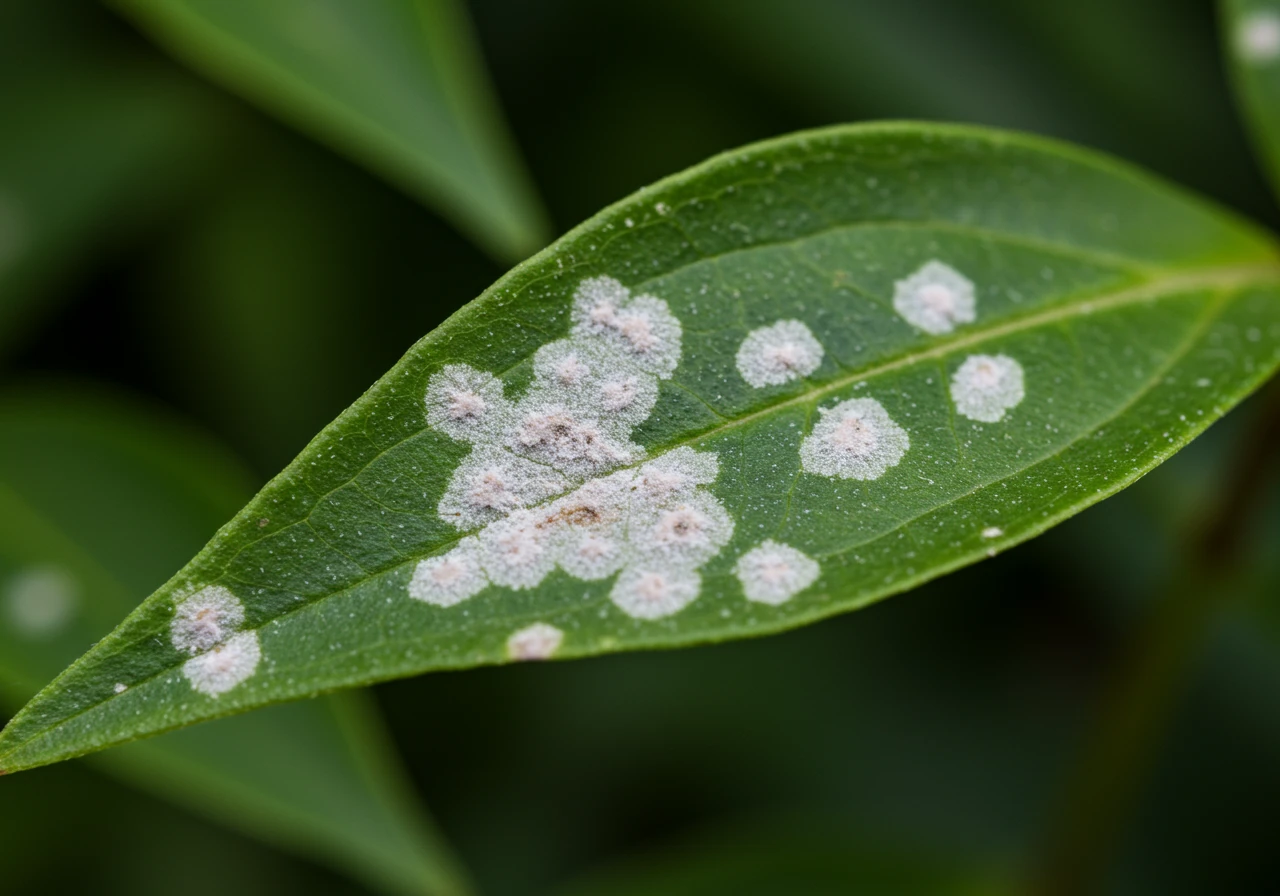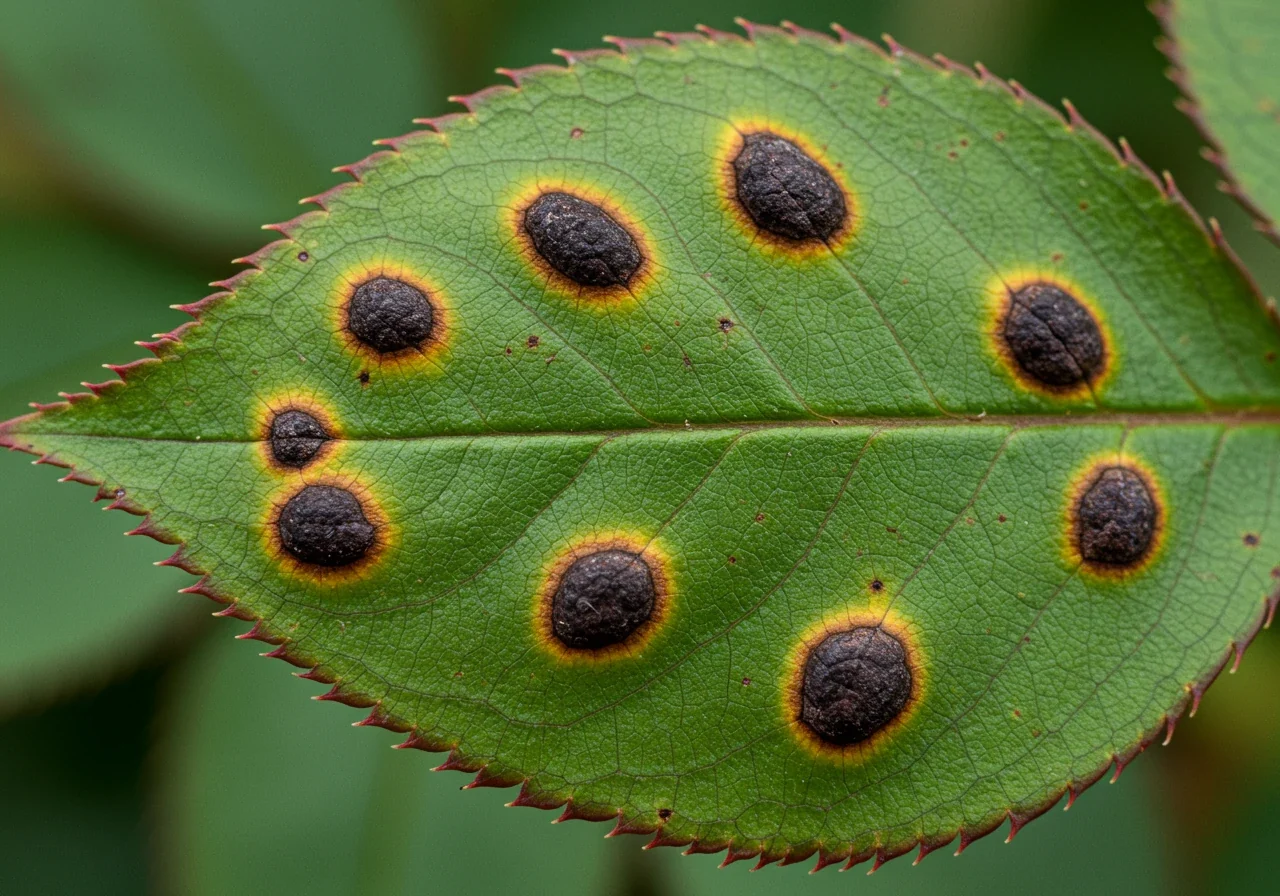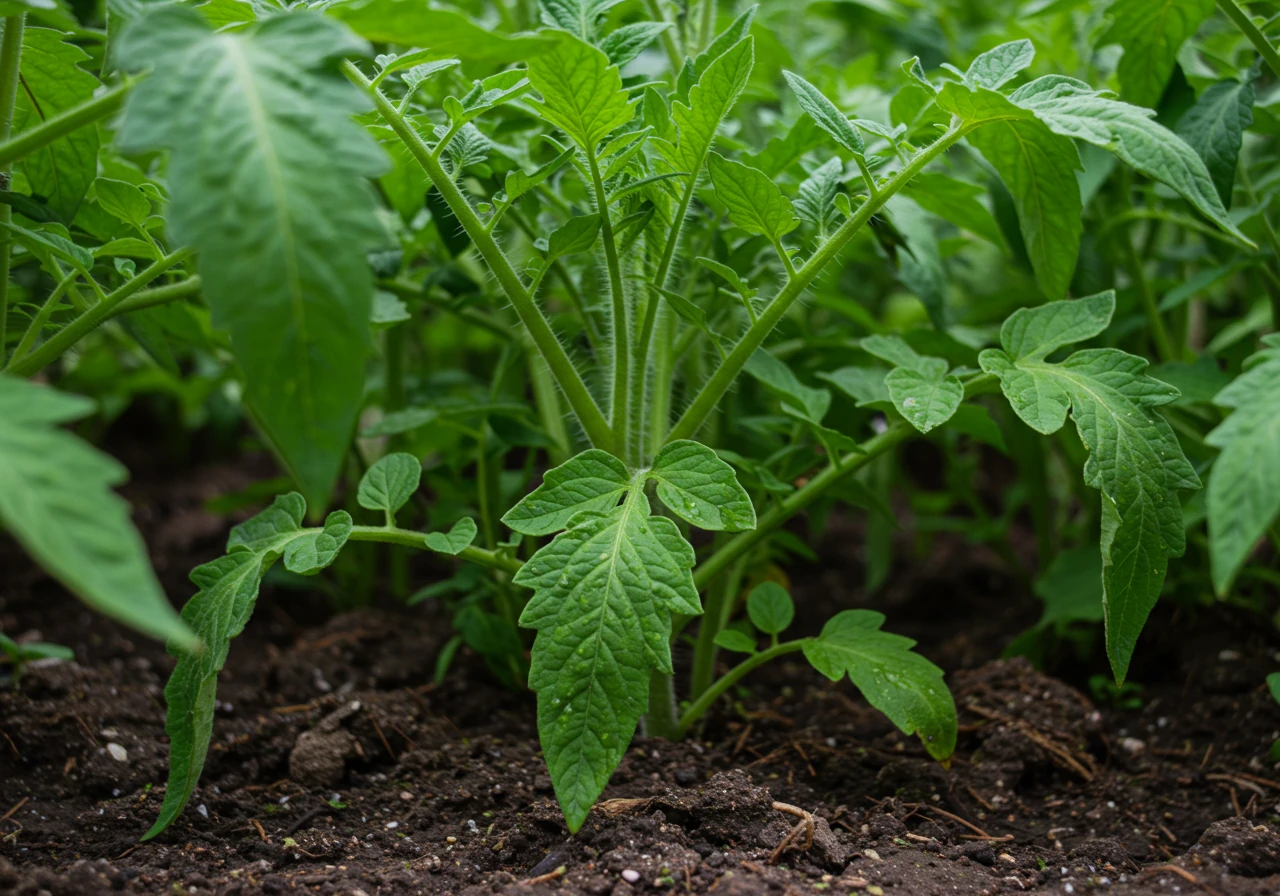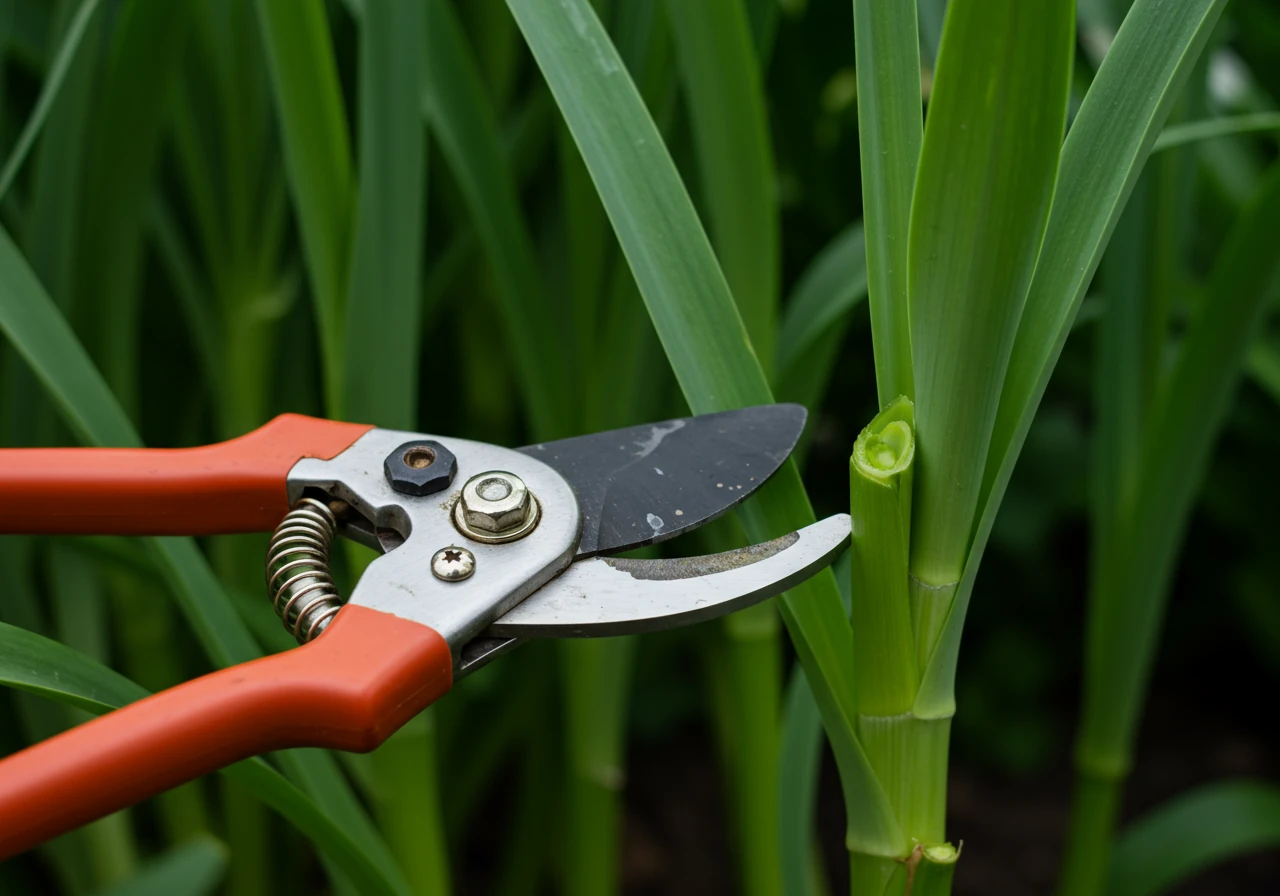Keep Richmond Gardens Healthy: Spot Summer Disease Fast
Article Quick Guide
- Learn why Ottawa's summer climate challenges gardens.
- Identify common summer plant diseases like powdery mildew and black spot.
- Discover how to patrol your garden for early disease detection.
- Apply eco-friendly first aid and treatment methods.
- Implement preventative strategies for a resilient garden.
- Find answers to frequently asked garden disease questions.
Is your garden showing signs of stress? Need expert help diagnosing or treating plant problems?
Request a Quote TodayIntroduction: Summer Beauty & the Beastly Blights in Richmond
Ah, summer in Richmond! The sun is shining, the birds are singing, and your garden is finally looking like something out of a magazine. Those carefully chosen perennials are blooming, the lawn is lush (mostly!), and you're dreaming of backyard barbecues surrounded by your beautiful landscaping efforts. It’s pure gardening bliss, right?
Well, mostly bliss. Because just when everything seems perfect, along come the uninvited guests – those beastly blights and pesky problems that seem to thrive in our lovely Ottawa summer climate. The heat and occasional bouts of humidity we get can, unfortunately, be a real party starter for various fungal diseases and other garden gremlins that can spoil the view.
Whether you're tending your vibrant flower beds in Richmond, nurturing vegetables in nearby Nepean, or perfecting your lawn care routine anywhere across the region, you've likely encountered these summer spoilers. From powdery mildew dusting your favourite phlox like unwanted powdered sugar to mysterious spots appearing overnight on your tomato leaves, it can feel like your green thumb is suddenly failing you.
But don't toss your trowel in frustration just yet! This section is your friendly guide to recognizing and tackling some of the most common summer plant diseases that pop up around here. We'll help you play plant detective and offer practical tips to keep your beautiful garden looking more "beauty" and less "beast" all season long. For ongoing support, consider professional garden maintenance.
Why Ottawa Summers Can Be Tough on Your Garden
Let's be honest, Ottawa summers are pretty glorious most of the time. Long sunny days, warm evenings... perfect for enjoying your backyard! But for our gardens, this season can sometimes feel less like a vacation and more like an obstacle course. Our unique climate combo throws a few punches that can leave even the hardiest perennials looking a bit worse for wear.
So, what makes Ottawa summers such a challenge for happy, healthy gardening?
- The Heat and Humidity Tag-Team: Remember those days when you walk outside and instantly feel sticky? Plants aren't huge fans either. High heat stresses them out, making them weaker. Add in the high humidity typical of Ottawa summers, and you've basically rolled out the red carpet for fungal diseases. Powdery mildew, black spot on roses, rusts – they thrive in warm, damp conditions. Air circulation becomes super important, which is one reason why following proper summer shrub pruning techniques can make a difference.
- Sudden Summer Storms: One minute it's sunny, the next... bam! A classic Ottawa thunderstorm hits. While the rain can be needed, intense downpours can physically damage leaves and stems, creating openings for plant diseases to enter. Heavy rain also splashes soil – and any lurking fungal spores or bacteria within it – up onto lower leaves, spreading problems quickly. Wind accompanying these storms can further stress and damage plants.
- Tricky Soil Situations: Our local soils can vary, but areas around Ottawa, including spots like Greely or Manotick, often deal with heavy clay. Clay soil holds onto water tightly. While moisture is good, too much waterlogging means poor drainage. Roots sitting in constantly wet soil can't get enough oxygen, become stressed, and are highly susceptible to root rot and other soil-borne diseases. Improving soil structure is key, something often considered in thoughtful landscape design and requiring good soil preparation. Stressed plants in poor soil also struggle to compete, making it even more important to focus on tasks like staying on top of summer lawn weeds.
- The Planting Power Play: How well plants handle summer stress often goes back to how they started. Ensuring new additions are planted correctly gives them the best chance. Getting expert tree planting advice can help establish strong root systems better equipped to handle summer extremes.
Navigating these summer landscaping challenges takes effort. Sometimes, despite our best intentions, the weather and conditions gang up on our gardens. If you find yourself battling persistent summer problems, exploring professional landscaping services can offer solutions and help restore your garden's health and beauty. View some of our successful projects in the Transformations gallery.
1. Powdery Mildew: The Unwanted Sugar Duster

- What it looks like: Imagine someone lightly dusted your plant leaves, stems, and sometimes even flowers with white or grayish powder. It often starts as small spots and then spreads out. Not exactly the kind of "sugar" you want on your prize-winning phlox!
- Who it picks on: This one isn't too picky. You'll find it on lilacs, bee balm (monarda), cucumbers, squash, zinnias, and roses, whether you're gardening in Richmond proper or have flower beds out in Osgoode.
- How it spreads: Powdery mildew loves warm days, cool nights, and high humidity – sound familiar, Ottawa? Unlike many fungi, it doesn't need *wet* leaves to take hold, just humid air. Poor air circulation in dense plantings makes it worse. Good fall cleanup is key to reduce overwintering spores, something a thorough Richmond yard cleanup service can definitely help with.
2. Black Spot: The Rose's Nemesis

- What it looks like: As the name suggests, this disease causes black spots on rose leaves, often with fuzzy or fringed edges. Eventually, the leaves around the spots turn yellow and drop off, leaving your poor rose looking rather naked and stressed.
- Who it picks on: Primarily roses. If you've got rose bushes lining your walkway in Barrhaven or decorating a trellis in Manotick, keep an eye out!
- How it spreads: Black spot spores need water to spread and infect. Think morning dew, rain, or overhead watering that keeps leaves wet for hours. The spores splash from infected leaves or the ground onto healthy ones. Planting resistant varieties is a good strategy if you're putting in new plants; something to consider for your next garden install project.
3. Leaf Spot Diseases (Septoria, Anthracnose, etc.): The Spotty Invaders
- What it looks like: This is more of a category than one specific disease. You'll see distinct spots on leaves, which can vary in color (brown, tan, black) and sometimes have dark borders or tiny black dots (fruiting bodies) inside. They can merge, causing large dead areas or making the leaf drop entirely.
- Who it picks on: So many plants! Tomatoes are famous victims (Septoria leaf spot), but also affects hydrangeas, maples, hostas, and many other *perennials* and vegetables grown across Ottawa, from Metcalfe to Greely.
- How it spreads: Like black spot, these fungi usually spread via splashing water (rain, irrigation) carrying spores from infected debris or soil onto lower leaves. This highlights the importance of good foundations; excellent soil preparation techniques can improve drainage and overall plant health, making them less susceptible.
4. Rust: The Orange Offender
- What it looks like: Look for small, raised pustules on the undersides of leaves, often yellow, orange, reddish-brown, or even purplish-black. When you touch them, they might release powdery spores that look like, well, rust. The top side of the leaf might show pale yellow spots.
- Who it picks on: Many plants can get specific rust diseases, including daylilies, hollyhocks, snapdragons, and even turfgrass (affecting *lawn care*). Whether you're tending flower beds in Kanata or maintaining a lawn in Richmond, rust can show up.
- How it spreads: Rust fungi thrive in moist conditions and moderate temperatures. Spores are easily spread by wind and splashing water. Good air circulation helps prevent it, as does tidying up infected plant material. Keeping the whole property tidy helps reduce disease pressure overall, a task suited for a comprehensive Ottawa property cleanup service or specific location services like Marionville yard cleanup service.
Detective Work: How to Spot Diseases Before They Take Over

Alright, time to channel your inner Sherlock Holmes, but for plants! Catching garden diseases early is like finding a tiny leak before it floods the house – way easier (and less messy) to deal with. The secret weapon in your gardening arsenal? Regular detective walks through your landscaping. Seriously, grab your morning beverage and make it a pleasant habit. A quick stroll around your yard a few times a week can make all the difference between a minor plant sniffle and a full-blown garden epidemic.
So, what exactly are you looking for on these patrols? You're not just admiring your beautiful blooms (though definitely take time for that too!). You need to train your eyes to spot anything that looks off or out of the ordinary:
- Spot the Spots: Are leaves turning yellow when they should be green? Seeing suspicious brown, black, tan, or even rusty orange spots popping up? Is there a weird white or grey powdery coating that definitely wasn't there yesterday? These are classic signs that something unwelcome might be settling in.
- Wilting Wonders (Not the Good Kind): Is a plant looking sadly droopy and wilted, even though you know the soil is reasonably moist? While it could just be heat stress, persistent wilting can signal root rot or other diseases interfering with the plant's ability to drink up water.
- Funky Formations: Keep an eye out for stunted, curled, or twisted new growth. Notice any strange bumps or growths on stems? Is there fuzzy mold, especially down near the soil line? Plants generally follow a pattern – deviations often mean trouble.
- Undercover Operations: Don't just glance at the tops of leaves! Many pests and plant diseases love to hide on the undersides, away from prying eyes. Make sure to gently lift leaves and peek underneath. Also, pay close attention to the lower leaves closest to the ground. Many fungal spores splash up from the soil onto these leaves first, especially after a good rain shower like we often get after a storm passes through the Kars area.
Your Weekly Plant Health Patrol Checklist:
- Check leaves (top & bottom) for spots, discoloration, or coatings.
- Inspect stems and new growth for abnormalities (stunting, curling, growths).
- Look near the soil line for mold or rot.
- Note any sudden wilting or changes since your last check.
Think like a microscopic menace – where would you hang out? Check crowded areas with poor air circulation, damp shady spots, and plants that have seemed stressed or weak in the past. Early detection is your superpower! Spotting a problem when it's just a few affected leaves often means you can simply snip off the diseased part (and toss it in the household garbage, *not* your compost bin, to prevent spreading!) and stop the issue in its tracks.
Maintaining good garden hygiene is crucial. A tidy garden offers fewer places for diseases to hide and overwinter. This is why regular property clean up is so important for removing potential sources of infection like fallen leaves and diseased plant debris. If you find yourself overwhelmed, or if a disease problem seems widespread, remember that professional help is an option. Services like a dedicated Metcalf garden clean up service or a broader Ottawa yard cleanup service can provide the thorough clear-out needed to reduce disease pressure. Perhaps you're further out and need assistance; options like a Marionville yard cleanup service exist too. As with any service, it's always a good idea to understand the scope of work; you can usually find specifics detailed in the company's terms and conditions.
Consistency is your best friend here. Aim for a quick plant health patrol at least once a week throughout the Ottawa growing season. Spotting trouble early keeps your garden looking great and saves you bigger headaches later. Happy detecting! Find us easily on Google: Clean Yards Ottawa.
Garden Ambulance: First Response & Eco-Friendly Treatments
Okay, Gardener-Medic, code green! You've spotted something funky on your favourite perennial or perhaps your prized tomatoes in Nepean are looking less than prize-worthy. Don't panic! Think of this section as your garden's first aid kit – the immediate steps and gentle remedies to try before calling in the heavy horticultural artillery. We're aiming for healthy plants and a happy planet, so let's focus on eco-friendly first response.

Step 1: Assess and Isolate (Gently!)
Before you do anything, take a closer look. Is it just one or two leaves? A single branch? Or is the whole plant looking poorly? Early detection, as we discussed, is key!
- Prune Promptly: If the problem seems localized (like a few spotty leaves or one mildewy stem), your sharpest, cleanest pruners are your best friend. Snip off the affected parts *immediately*. Don't just cut the diseased bit; make your cut a little further down into healthy tissue to ensure you've removed all the infected material.
- Sterilize Your Tools: This is crucial! After *each cut* into diseased material, wipe your pruner blades with rubbing alcohol or a disinfectant wipe. Seriously, don't skip this. Otherwise, you're just playing doctor and accidentally spreading the germs to the next 'patient'.
- Contain the Contagion (Proper Disposal is Key!): Here’s a super important Ottawa-specific tip: **Do NOT put diseased plant material in your Green Bin (compost)!** While fantastic for regular yard waste, the composting process might not get hot enough to kill stubborn disease spores, potentially spreading them further next season. Bag up the infected leaves, stems, or entire plants if necessary, and place them in your regular household garbage destined for the landfill. Proper disposal is a vital part of disease management, whether you're doing a small trim or requiring more extensive help like a Marionville garden clean up service for larger issues. For information on Ottawa's waste policies, consult the City of Ottawa Green Bin guidelines.
Step 2: Try Eco-Friendly Treatments
Chemical warfare should be a last resort in the home garden. Often, simple, earth-friendly tactics can make a big difference:
- Improve Air Circulation: Many fungal diseases thrive in stagnant, humid air. Selectively prune surrounding plants (or even thin out the affected plant itself, once the disease is under control) to let the breeze blow through. Think of it as giving your plants some personal space.
- Water Wisely: Avoid overhead watering, which splashes spores around and leaves foliage wet – prime conditions for disease. Water the *soil* at the base of the plant, preferably early in the morning so leaves have time to dry before evening.
- Mulch Magic: A good layer of organic mulch does wonders! It prevents soil (and the spores hiding within) from splashing up onto lower leaves during rain or watering. Plus, it keeps soil moisture even and roots happy. Considering healthy mulching practices is a great preventative step.
- Simple Sprays (Test First!):
- Baking Soda Solution: For powdery mildew, try 1 tablespoon of baking soda and 1/2 teaspoon of liquid soap (not detergent) in 4 litres of water. Spray lightly on affected leaves.
- Horticultural Oil/Neem Oil: These can smother certain fungal spores and small insects that might spread disease. Follow label directions carefully and avoid spraying in direct sun or high heat. Check resources like the Ontario Ministry of Agriculture, Food and Rural Affairs (OMAFRA) for pest control advice.
- Always test any spray on a small, inconspicuous part of the plant first and wait 24-48 hours to ensure it doesn't cause damage.
Step 3: Monitor and Maintain
Keep a close eye on the affected plant and its neighbours. Continue practicing good garden hygiene. Remember that healthy, well-cared-for plants are naturally more resistant to diseases. Consistent ongoing garden maintenance is your best long-term defence.
Sometimes, despite your best efforts, a problem persists or spreads rapidly. If you're feeling overwhelmed or considering professional intervention, gathering information is key. And if you happen to get quotes for services, please share your feedback on estimates; it helps businesses serve you better. Always ensure you understand the scope of any service by reviewing details like our standard practices.
Seasonal Note: Add a reminder to your fall calendar: "Thorough garden cleanup to remove overwintering disease spores!" This simple step can save you headaches next summer in Richmond, Barrhaven, or wherever your garden grows! Consider a dedicated city garden clean up service for comprehensive removal.
Monthly Garden Health Focus: Summer Timeline
Early Summer (June)
Focus on prevention: Ensure proper spacing, mulch beds, monitor for first signs of powdery mildew or leaf spots, especially after rain. Start regular patrols.
Mid-Summer (July)
Peak humidity = Peak Fungal Risk! Be vigilant for black spot on roses, rusts, and spreading leaf spots. Water deeply at the base. Prune affected foliage immediately.
Late Summer (August)
Continue monitoring. Mildew can worsen as nights cool. Assess stressed plants. Plan fall cleanup strategy. Consider aeration for lawns if fungus was an issue.
Early Fall (September)
CRITICAL Cleanup Time! Remove all diseased debris (to garbage!). Cut back affected perennials. Prepare soil for next year. Schedule a professional city property cleanup service if needed.
Fortify Your Flora: Building a Disease-Resistant Richmond Oasis
Alright, team green thumb, let's talk defence! While our "Garden Ambulance" section covered patching things up *after* trouble strikes, this part is all about building a garden fortress – making your Richmond oasis naturally tough and less inviting to those pesky plant diseases in the first place. Think of it like boosting your garden's immune system. It takes a little planning and consistent effort, but trust us, prevention is way less stressful (and often cheaper!) than constantly battling blights. Let's build that resilience!
1. Choose Your Champions Wisely (Right Plant, Right Place)
It all starts before you even dig a hole! Not all plants are created equal when it comes to shrugging off diseases common in our Ottawa climate.
- Resistant Varieties: When shopping for perennials, shrubs, or even veggies, look for labels that mention "disease resistance." Breeders work hard to develop varieties less susceptible to things like powdery mildew or black spot. Doing a little homework upfront pays off big time. This is where thoughtful material selection really shines – choosing plants naturally suited to thrive here.
- Know Your Zone & Site: Pick plants rated for our hardiness zone (typically 5a/b around Ottawa) and suited to your specific light conditions (sun, shade, part-shade) and soil type. A happy, unstressed plant is naturally more resistant to problems, whether you're planting in Richmond or out near Vernon. Get advice from local experts like the Friends of the Central Experimental Farm.
2. Give 'Em Room to Breathe (Planting Power)
Imagine being crammed into a crowded room on a humid day – uncomfortable, right? Plants feel the same!
- Spacing Savvy: Resist the urge to pack plants too tightly. Check the mature size on the plant tag and give them adequate space. Good air circulation around foliage is one of the best defences against fungal diseases that love stagnant, damp air – a frequent issue during humid Ottawa summers.
- Plant at the Right Depth: Planting too deep stresses roots and can lead to rot, while planting too high exposes roots. Follow planting guidelines for each specific plant.
3. Build Bodacious Soil (Soil Superheroes)
Healthy plants start with healthy soil. It's the foundation of your garden's resilience!
- Improve Drainage: Many areas around Ottawa deal with heavy clay soil, which holds water. Amend your soil with plenty of compost or other organic matter to improve structure and drainage. Happy roots = happy plants!
- Feed the Soil, Feed the Plant: Healthy, living soil rich in organic matter provides essential nutrients, making plants stronger and better equipped to fend off diseases.
4. Water Without Worry (Watering Wisely)
We mentioned this in first aid, but it's crucial for prevention too.
- Target the Roots: Water the soil at the base of your plants using a soaker hose or watering wand. Avoid overhead sprinklers that wet the leaves, creating an open invitation for fungal spores.
- Morning Moisture: Water early in the day so any splashed foliage has time to dry before cooler evening temperatures set in. This principle often contrasts with some good lawn care practices where timing might differ, but for garden beds, morning is usually best.
5. Keep it Clean! (Sanitation Station)
Good hygiene isn't just for hospitals; it's vital for a healthy garden.
- Remove Diseased Material Promptly: If you spot suspect leaves or stems, snip them off *immediately* and dispose of them in the household garbage (NOT your green bin!).
- Clean Your Tools: Regularly wipe down pruners, trowels, and shovels, especially after working with diseased plants or moving between different garden areas.
- Fall Cleanup is Key: Don't let diseased leaves and debris linger over winter! Many pathogens hide out in fallen material, waiting to reinfect next spring. A thorough fall cleanup reduces the starting population of disease spores significantly. For larger jobs or if you're short on time, bringing in a reliable city yard cleanup service can make a huge difference. On very large properties or for particularly heavy debris removal, a thorough city property cleanup service might be the way to go. Even smaller, dedicated efforts count, like utilizing a dedicated Marionville garden clean up service if you're in that specific area. Check our full list of services for options.
6. Mulch is Your Friend (The Protective Blanket)
A 2-3 inch layer of organic mulch (like shredded bark or compost) works wonders: prevents soil splashing onto lower leaves, conserves moisture, regulates soil temperature, and suppresses weeds (which can compete with your plants and harbour pests/diseases). Learn more about mulching and edging.
7. Mix It Up (Crop Rotation - Mostly for Veggies)
If you grow vegetables, try not to plant the same type of crop (e.g., tomatoes, peppers, potatoes are all related) in the exact same spot year after year. Rotating crops helps prevent soil-borne diseases from building up specific to that plant family.
Building a disease-resistant garden isn't about achieving sterile perfection – it's about creating a balanced, healthy ecosystem where plants have the best possible chance to thrive despite the challenges our Ottawa summers throw their way. By implementing these preventative strategies, you're investing in the long-term beauty and vitality of your Richmond oasis! Sometimes a fresh start is needed; consider sod installation for lawns or new garden installations.
Common Summer Disease Frequency (Illustrative)
Estimated relative prevalence of common garden diseases during peak Ottawa summer conditions:
*Note: Values are illustrative examples, actual prevalence varies significantly by year, weather, and specific garden conditions.
Quick Tips: Keep Your Ottawa Garden Thriving
Want the cheat sheet for keeping your Ottawa garden gorgeous and fighting fit? Here are a few essential habits to cultivate – think of it as garden bootcamp! Even experienced gardeners in places like Manotick stick to these basics:
- Water Wisely, Not Widely: Ditch the sprinkler shower for your flower beds! Water the soil directly at the base of plants, ideally in the morning. Wet leaves are basically an open invitation for fungal foes.
- Give 'Em Breathing Room: Don't overcrowd your plants! Good air circulation is like kryptonite to many common fungal diseases that love our humid Ottawa summers. Let that breeze flow through.
- Pick Your Players Carefully: Start strong by selecting plants known to be resistant to common issues. Making smart plant and material selections specific to our climate is half the battle. Check out inspiring examples of healthy yards in our garden transformations gallery.
- Practice Good Hygiene: Snip off suspect leaves *immediately* and put them in the garbage (not the green bin!). A really clean yard discourages pests and diseases; consider a thorough city garden clean up service in fall to minimize overwintering problems. Reducing overall yard stress, perhaps even by replacing struggling turf via professional sod installation, can contribute to healthier surrounding garden beds. Check our services for Metcalf or Ottawa specific cleanups.
- Ask for Backup: Sometimes, despite your best efforts, problems persist. If you're feeling stumped or overwhelmed by disease issues, don't hesitate to get in touch with us for professional advice or assistance. Learn more about us and our commitment. Our Privacy Policy ensures your information is safe.
FAQs: Your Richmond & Ottawa Garden Disease Questions Answered
My lawn in Barrhaven has weird brown patches/fuzzy stuff appearing in the summer heat. Is that a disease, and what can I do?
Uh oh, sounds like you might be dealing with a summer lawn fungus! Things like dollar spot (small, tan circles) or red thread (pinkish threads on grass blades) are pretty common visitors in Ottawa lawns, especially during hot, humid weather. Proper lawn care is your first line of defence: water deeply but infrequently (and always in the early morning!), avoid mowing too short, don't overdo it with high-nitrogen fertilizer during summer stress, and consider core aeration in spring or fall to improve air and water movement. Improving the overall health and vigour of your lawn makes it much tougher for these diseases to take hold. You can see some fantastic examples of healthy, revitalized yards over in our project transformations gallery.
I live in Greely and have really heavy clay soil. Does this make garden diseases worse for my perennials and shrubs?
Great question, and yes, heavy clay soil, which is quite common in areas like Greely and Manotick, can definitely contribute to disease problems! The main issue is poor drainage. Clay holds onto water tightly, meaning plant roots can end up sitting in soggy, oxygen-deprived conditions. Stressed roots are much more susceptible to root rot diseases and other soil-borne pathogens. Your best long-term strategy is to consistently amend your soil with organic matter like compost. This gradually improves the soil structure, allowing for better drainage and happier, healthier roots. Dealing effectively with challenging local soil conditions is something we're very familiar with; you can learn more about our team's local experience and approach. Proper soil preparation is key.
I've diligently tried spraying baking soda mix on my phlox for powdery mildew, but it just keeps coming back! Should I just give up or call someone?
Don't throw in the trowel just yet! It’s frustrating when mildew persists. Home remedies like baking soda sprays can help *manage* mild cases of powdery mildew or slow its spread, but they rarely eliminate it completely, especially if the weather conditions (hello, Ottawa humidity!) are perfect for the fungus. Think of it more like symptom relief than a cure. Keep up with the essential preventative stuff: prune for better air circulation, water the soil not the leaves, and remove affected leaves *immediately* (and dispose of them properly!). However, if you're facing a severe infestation year after year, or it's spreading rapidly, it might be time to consider other options. This could involve switching to more disease-resistant plant varieties, or sometimes a really thorough cleanup is needed to reduce the amount of fungal spores overwintering in the area, similar to the intensive work provided by a Metcalf property cleanup service. Our city garden maintenance service can also help manage persistent issues.
You emphasized not putting diseased plants in the City of Ottawa Green Bin. What *exactly* should I do with my blight-covered tomato plants from my Nepean garden this fall?
Excellent question, and thanks for remembering that crucial point! For definitely diseased plant material – like tomato plants showing signs of early or late blight, peony leaves covered in botrytis blight, or rose branches riddled with black spot – the safest disposal method is to bag them securely and place them in your regular household garbage bin destined for the landfill. The reason? While municipal composting is great, the process might not consistently reach temperatures high enough or long enough to reliably kill *all* types of stubborn fungal spores or bacteria. Putting them in the garbage prevents them from potentially surviving the composting process and being reintroduced to gardens later. If you've had a major disease issue and end up removing a large volume of infected plants or soil debris, ensuring it's all properly removed might warrant looking into help, like that offered by a Marionville property cleanup service, to handle the disposal correctly. A comprehensive property clean up in the fall is recommended. Need help? Check our contact page or see if our thank you page has info after a request.
Conclusion: Enjoy a Healthy, Happy Richmond Garden This Summer!
So there you have it! Your crash course in keeping those pesky summer plant diseases from crashing your Richmond garden party. We know Ottawa's heat and humidity can be tricky, but don't let that scare you off your gardening dreams or dampen your enthusiasm for beautiful landscaping.
Remember the keys to success we talked about:
- Keep a watchful eye – spotting problems early makes them much easier to handle!
- Practice good garden hygiene – clean those tools and remember, diseased plant bits go in the garbage, not the Green Bin!
- Focus on prevention – choose tough, suitable plants, give them breathing room, and build up that healthy soil.
Whether you're tending your beautiful flower beds right here in Richmond or nurturing shrubs just down the road in Manotick, a little preventative care and quick action make a huge difference. Think of it as giving your garden its best chance to shine, even when the weather gets a bit sticky.
But hey, even the most dedicated gardener needs backup sometimes. If you find yourself battling persistent problems, feeling overwhelmed, or just want expert help creating a more resilient and beautiful outdoor space, don't hesitate to get in touch with our team. We're always happy to share our expertise and discuss how our services can help. For more local tips and gardening advice tailored for the Ottawa area, feel free to explore the other resources on our website blog.
Ready to ensure your garden thrives all season?
Explore Our Garden Care ServicesNow, go forth and enjoy that healthy, happy Richmond garden this summer – you've absolutely earned it!

